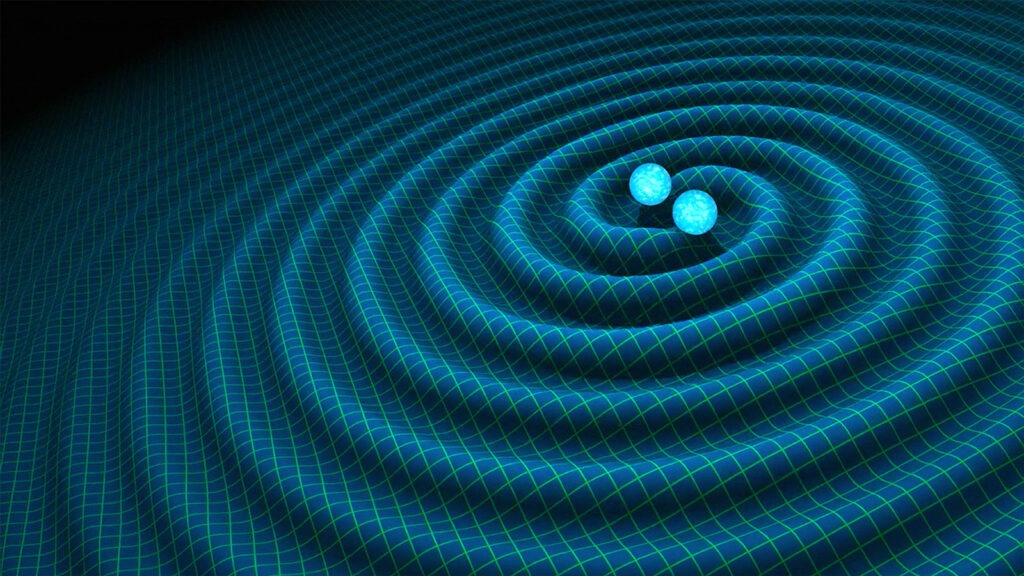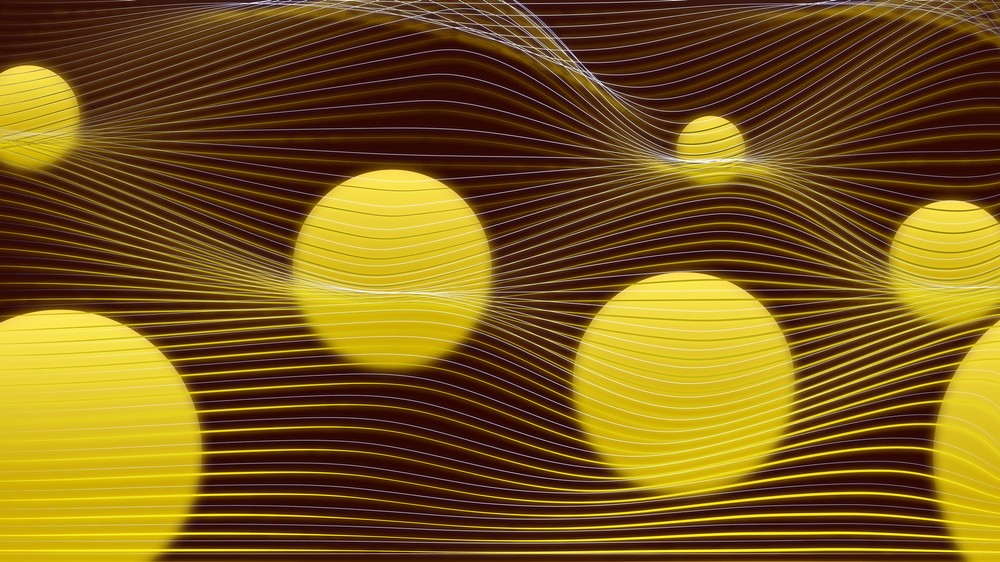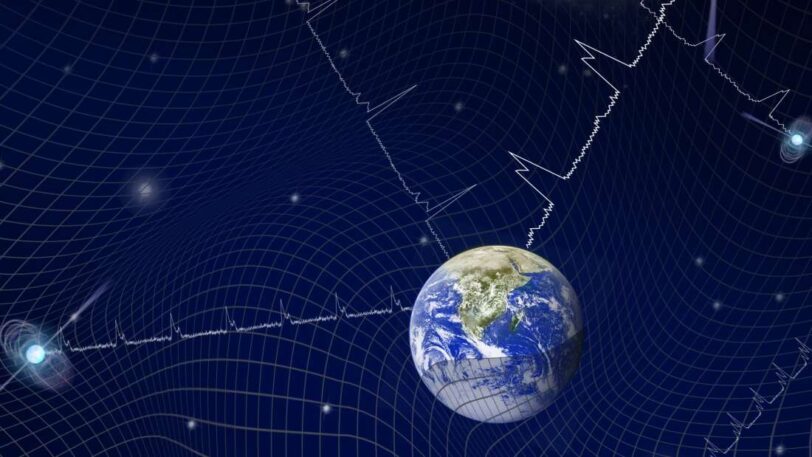In 2015, scientists snagged the first detection of a gravitational wave, a ripple in the fabric of spacetime. The achievement marked the beginning of an entirely new field of astronomy and earned the 2017 Nobel Prize in Physics. Now, emerging research suggests that we may be on the cusp of yet another major milestone for gravitational wave astronomy: the detection of the so-called “gravitational wave background.”
Detecting gravitational waves from black holes or neutron star collisions is not an easy task. Gravitational waves squeeze and distort space-time but only by a fraction of the size of an atom. To catch the gravitational wave background researchers had to be even more creative with how they looked for it.

The discovery of gravitational waves continues to be one of the most consequential breakthroughs in science because it allows researchers to examine cataclysmic events, such as the mergers of black holes, that could never be spotted with traditional light-based astronomy.
In The Astrophysical Journal Letters, the team report finding the first exciting result from 13 years of data, a low-frequency signal. The team was able to rule out many sources of errors and effects unrelated to gravitational waves, such as matter in our own Solar System. What’s left is a strong hint that could be the gravitational-wave background.
“It is incredibly exciting to see such a strong signal emerge from the data,” lead author Dr Joseph Simon, from the University of Colorado Boulder, said in a statement. “However, because the gravitational-wave signal we are searching for spans the entire duration of our observations, we need to carefully understand our noise. This leaves us in a very interesting place, where we can strongly rule out some known noise sources, but we cannot yet say whether the signal is indeed from gravitational waves. For that, we will need more data.”

If the gravitational wave background signal is confirmed, it will provide a new look into some of the mysteries of the universe, such as how the supermassive black holes at the center of galaxies merge. This has been a head-scratching issue for physicists for quite some time.
Detectors like Laser Interferometer Gravitational-Wave Observatory (LIGO), which captured the first gravitational wave over five years ago, are built to sense relatively loud, high-frequency waves. But scientists predict that there is also an ambient murmur of subtle, low-frequency ripples constantly flowing through everything in the universe, including Earth. Now, researchers think they’ve found a candidate signal after more than a decade of watching fast-spinning collapsed stars for the faintest sign of a discrepancy that might indicate a wave.
“If we were to be able to detect this signal, we would actually be able to open a completely different window into the universe than what LIGO is able to probe,” he continued, “and we will be able to learn more about the way that these supermassive black holes grow and evolve through throughout kind of cosmic time with their host galaxies” said Joseph Simon, an astrophysicist at the University of Colorado Boulder


